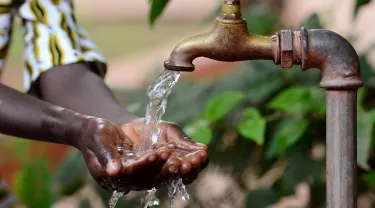A filtering technology inspired by biology could help curb fluorosis, a condition that results from excess fluoride in water. The condition affects tens of millions of people worldwide and can weaken teeth, calcify tendons and ligaments, and lead to bone deformities.
While potentially producing healthier drinking water, the technology—which takes the form of polymer membranes—also has the potential to improve industrial processes such as environmental remediation, chemical production, and mining, among others.
Researchers at Tufts School of Engineering developed the novel polymer membranes to separate fluoride from chloride and other ions—electrically charged atoms—with twice the selectivity reported by other methods.
Most current filtering membranes separate molecules by significant differences in particle or molecular size and charge but have difficulty distinguishing single-atom ions from each other because of their small size and when their electric charges are nearly identical. By contrast, the membranes produced by Tufts researchers are capable of separating ions that differ by only a fraction of their atomic diameter even when their electric charges are nearly identical.
In developing the design that allows for this advance, the research team turned to cell biology. They coated a zwitterionic polymer—a polymer in which molecular groups contain closely linked positive and negative charges on their surface—onto a porous support, creating membranes with channels narrower than a nanometer surrounded by both water-repelling and plus- and minus-charged chemical groups.
As with biological channels, the very small size of the pores forces the ions to interact with the charged and water-repelling groups in the pores, allowing some ions to pass much faster than others.
The method researchers used to manufacture the membranes is easy to scale up for industrial applications, said Ayse Asatekin, associate professor of chemical and biological engineering in the School of Engineering, making the technology potentially useful beyond its drinking water application. Specifically, it could be used to improve agricultural water supplies, clean up chemical waste, and ameliorate chemical production. It could even improve yields from limited geological reserves of lithium for sustainable lithium battery production or of uranium needed for nuclear-power generation.
